Crab Fundraiser, Feb 11, 2023
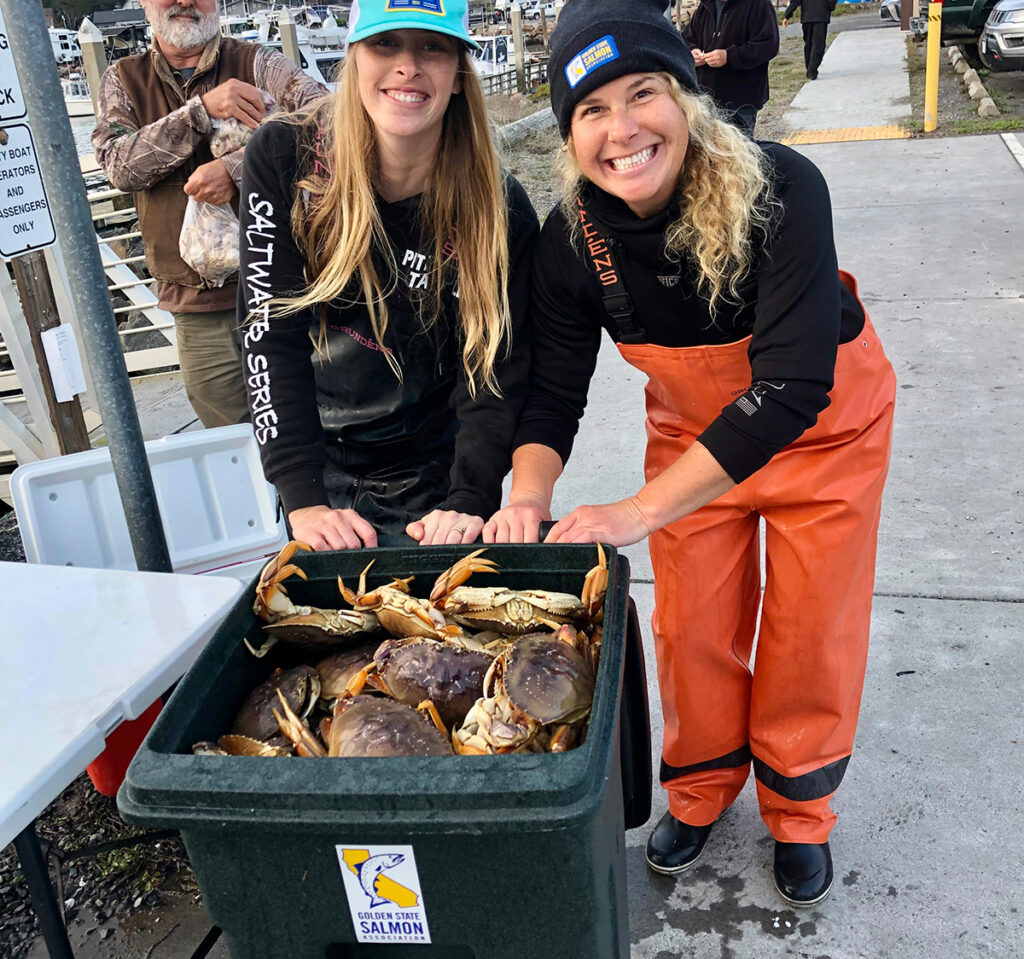
GSSA invites everyone to an afternoon and early evening crab feast on February 11, the Saturday before Valentine’s Day. There will be two seatings, one at 1pm and the next at 430pm. Unlike many crab feeds, GSSA does not and will not use previously cooked (and sometimes frozen) crab. We go the extra mile to cook it so you know you’re getting the real thing. Consider buying your partner a rose and getting a couple of tickets for a head start on Valentine’s Day. Or bring the whole family or team. Who doesn’t like a fresh crab dinner? And you know the proceeds are going to a good cause that will benefit you and your neighbors in the long run. Get tickets here.
2022 Returns, Not Good
After back to back storms in early December, a few more bright shiny adult salmon swam into the Central Valley. They were a most welcome sight as earlier returns looked bleak. However it’s not looking likely there were enough of them to make much of a difference. We won’t know until late February or early March what the total return was, nor the number of two-year-olds which is used to calculate the expected number of adults in the ocean to potentially supply a 2023 fishing season. Warning: Some state fish experts are suggesting they haven’t seen such grim returns since 2007, the year before the fishery closure.
Of all the rivers in the Sacramento Basin, the American River may turn out to be the recipient of the most returning adult fall run.
Additional Fish from Feather River Hatchery

The Feather River hatchery will release millions of extra young salmon next year in connection with the drought. The hatchery fertilized millions more eggs than it needed this year under the assumption the eggs might be needed by other hatcheries due to exceedingly low returns of adult fish in 2022. The other hatcheries ended up getting enough eggs in their own watersheds (barely) so the extra Feather River eggs were surplus. The question immediately arose of what to do with them. CDFW recognized the value of at least hatching the eggs and releasing the fry into the Feather River, rather than destroying them. GSSA told CDFW it strongly supported allowing the eggs to hatch and releasing them to add to the fishery. Before that could be done, other agencies, including the National Marine Fisheries Service (NMFS) and the CA Dept. of Water Resources (DWR), had to be consulted. GSSA offered to help in any way to see that this outcome was achieved.
DWR owns and operates the Feather River hatchery immediately downstream of its Oroville Dam on the Feather River. NMFS is the agency responsible for protecting threatened and endangered salmon species in the Central Valley that could theoretically be affected by the introduction of millions of extra fall run hatchery salmon.
Both agencies were consulted and agreed to allow the eggs to hatch and be released. Along the way, different ideas were discussed about how long to keep the fry once they hatched, with consideration to the limited space to rear them at the Feather River hatchery and other factors. In the end the decision was made to rear as many as possible to smolt size (about four inches in length) due to higher survival of smolts compared to much smaller fry and the desire to fin clip and tag more of the fish to eventually provide a more complete picture of their survival and contribution to the fishery. CDFW and DWR negotiated how costs would be covered to do the marking and tagging. Both agencies deserve thanks for these actions.
Between extremely poor river conditions, with low, warm water that harms salmon, and the loss of salmon offspring caused by a recent spike in a low vitamin B1 condition in adult salmon, salmon stocks are extremely precarious. These additional hatchery spawned salmon will help keep the species going at levels where a fishery should be possible, while contributing to the rebuilding of the runs in the Central Valley. GSSA appreciates the work of staff of all agencies involved, especially CDFW, in giving these fish and the people that rely on them a chance and in responding to drought conditions.
GSSA meets with head of US Bureau of Reclamation to discuss need for stronger Central Valley Project salmon protections

GSSA and a handful of other fishery and conservation groups attended an informal meeting with the Commissioner of the Bureau of Reclamation, Camille Touton. The meeting took place in Sacramento and was aimed at sharing views regarding the current effort underway to rewrite rules governing operation of the federal dams, pumps, canals and reservoirs known as the Central Valley Project. Together, this massive water infrastructure captures and moves a huge volume of water formerly in free flowing salmon rivers to mostly agricultural water districts in California. GSSA president John McManus told the commissioner that salmon fishermen and women are likely looking at some highly restricted seasons in the next three years as a result of water management decisions made leading up to and through the current drought. McManus also pointed out that with water deliveries to many of the districts with contracts for CVP water exceeding the volume of rain and snow, the contracts are clearly unsustainable and warranting review. The Bureau has already said it will review water contracts with senior water rights holders in the San Joaquin Valley but hasn’t expressed a similar willingness yet to do so with contracts to Sacramento Basin water districts. Not surprisingly, the commissioner listened but made no commitment to action. McManus also asked the commissioner what plans might be in the works for water deliveries to Sacramento Basin senior water rights holders if drought persists. In 2022 the state arranged to pay some of these water districts not to take water they’d normally claim. The state did this after two prior years of near complete losses of winter run salmon, a species that’s supposed to enjoy protection under the federal Endangered Species Act. The commissioner seemed reluctant to commit to a repeat of 2022 on this issue.
The commissioner also heard from others that the state is among the biggest impediments to achieving sustainable salmon protections. This is most evident in the so-called Voluntary Agreement the governor’s office is trying to create, which basically creates smoke and mirrors but allows largely status quo water diversions to continue at least for eight years.
The commissioner was surrounded by her senior California managers. Others at the meeting included representatives of PCFFA, NRDC, EDF, TNC, SF Baykeeper, River Partners and CalTrout.
GSSA collects almost 1500 signatures in petition to USFWS, NMFS leadership in DC to strengthen salmon protections in new Central Valley Project operating rules
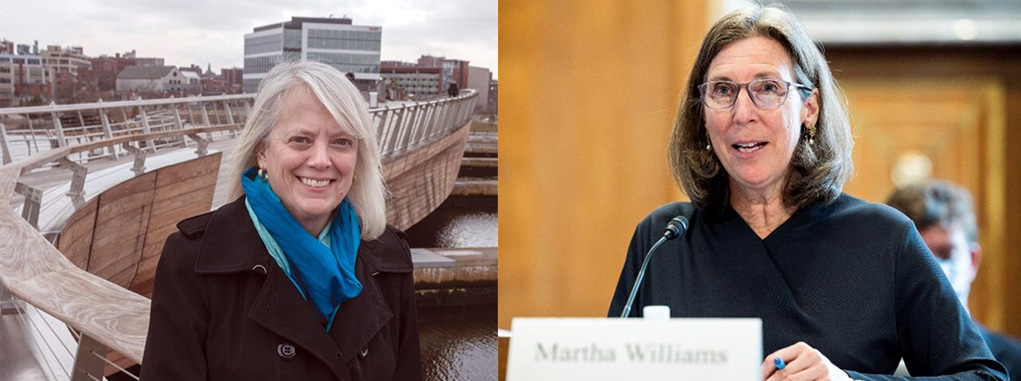
GSSA recently forwarded a petition to the heads of the National Marine Fisheries Service and US Fish and Wildlife Service in Washington DC. The petition was signed by about 1500 people from all over California. It asks the DC brass to intercede in the ongoing work rewriting water operation rules governing the CVP in order to stem the loss of salmon in the Central Valley. The rules govern capture, storage and delivery of water from the Sacramento River and some of its tributaries and the San Joaquin River and some of its tributaries. The rules rewrite is primarily being handled by federal staffers on the west coast. Some of the biggest water districts that receive water from the CVP are opposed to including enforceable requirements in the new document.
There’s a good chance that differences between what federal water managers want to see and what the protections fish and wildlife officials should be pushing for will eventually elevate the issues to the big bosses in DC to sort out. We’re hoping that our petition will encourage them to come down on the side of salmon.
Bureau of Reclamation agrees to run model on what salmon friendly water operations might look like
After resisting for years, the Federal bureau of Reclamation agreed to run a model based on input from conservation experts looking at how much water would be needed where and when to provide a more salmon friendly Central Valley. State and federal water managers had largely taken a “head in the sand” approach to this question in the past, in part because they didn’t want to produce scientifically credible data clearly showing that diversions have to be reduced if we’re to restore salmon runs. While the Bureau agreed to take input from conservationists and run the model, the state opposed the move. Maybe the state fears the resulting data from the highly detailed and credible modeling may be used to force diversion reductions though the courts.
The Merced River (nominally a Central Valley salmon river) goes dry
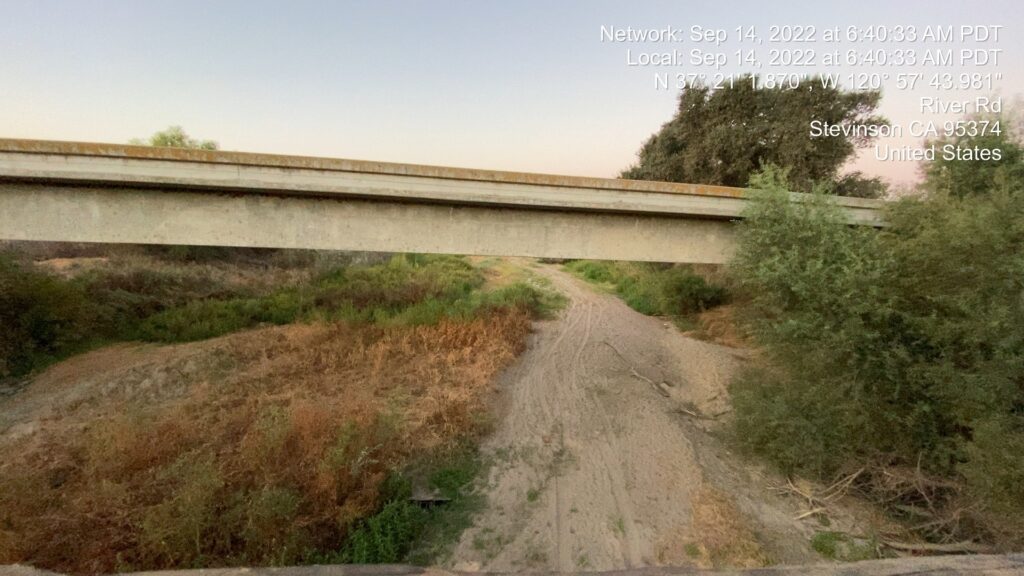
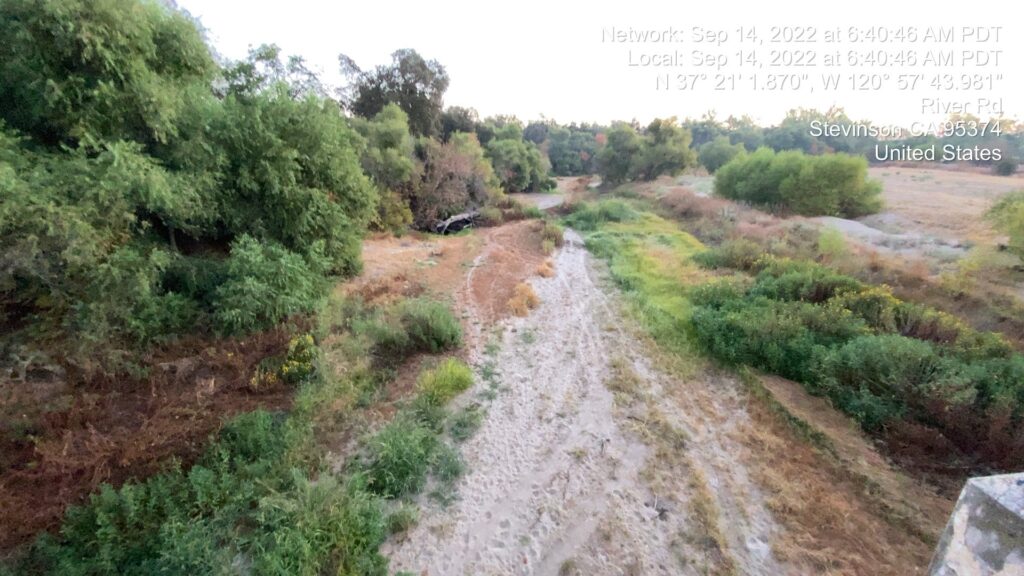
The Merced River, a once major salmon producing river that feeds into the San Joaquin River, totally dried up in 2022 near the confluence with the San Joaquin according to multiple sources. Everyone knows that drought means there’s a lot less water in our rivers but the continued diversions on the Merced, to the point of creating dry sand in the riverbed, didn’t have to be. A salmon hatchery still pumps out about a million baby salmon yearly on this river that originates in Yosemite National Park. It’s clear that any adults returning to spawn in the early fall of 2022 were totally out of luck. And so it’s been. One by one we see water districts divert rivers once flush with salmon to the point of dry sand and dead salmon.
Several groups sued the city of Bakersfield last month in an effort to fix some of the damage done to the Kern River which is dewatered most of the time. We hope they win.

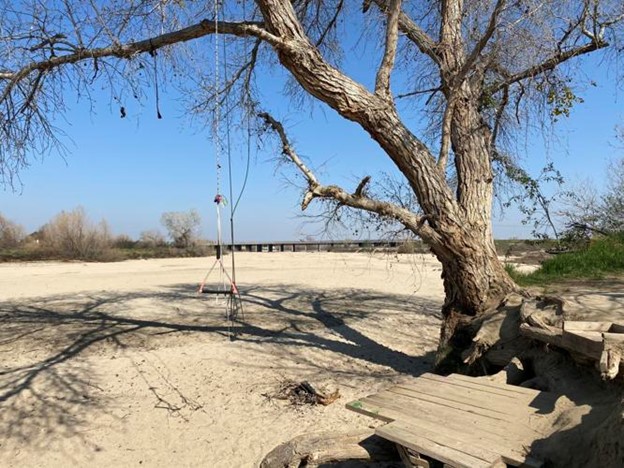
Hope Springs Eternal

As we ring out 2022 and head into 2023 we wanted to share a bit of hope captured by GSSA director Vance Staplin on a recent trip through the Sierras. It was snow in the mountains, the same stuff that will turn into really cold water flowing down into the Central Valley sometime in the coming months. Even though we know that most of the runoff will be intercepted by huge empty, thirsty reservoirs locked in behind dams, and never make it to sea as natural runoff, we’re still heartened by the sight because it is, after all, the stuff that gave California salmon in the first place.
Volunteers Needed

GSSA is putting out a call for help from volunteers. We’re looking for some extra hands to help man the GSSA booth at the International Sportsmen’s Expo in Sacramento January 19 to the 22nd. We could also use some help at the February 11 crab fundraiser in San Rafael and in June at the Santa Rosa dinner.
Let us know if you can help by emailing info@goldenstatesalmon.org or call 855-251-4472. Thanks.
Looking Over the Horizon

In the year ahead, we’re going to need your help more than ever. We’ve got the hatchery releases trending better but returns of adults to the natural spawning areas is believed to be quite low. In any event, GSSA will be in the trenches in the coming years and years beyond if we can get the support to keep going. If you didn’t get our year end letter, click here to see how GSSA made a difference in 2022.
If you haven’t done so already, please consider renewing your membership starting at $35 or making a donation for the coming year. You can renew here or mail a check in to:
PO Box 320096
San Francisco, CA 94132
GSSA is also set up to take donations of any stocks you might want to part with and we’re always grateful for donations above the membership fee.
We are very grateful for the support we got from many this past year. There’s a lot of unfinished work ahead. We’re on it thanks to you.
